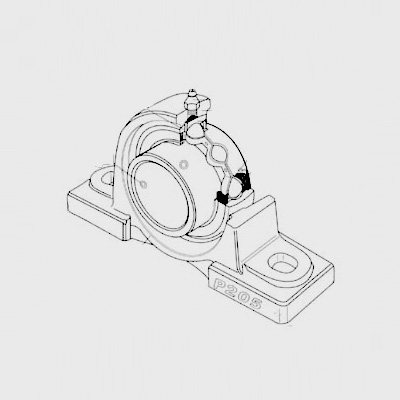
Nov . 12, 2024 06:11 Back to list
bearing design in machinery
Bearing Design in Machinery
Bearings are critical components in mechanical systems, playing a vital role in minimizing friction and enabling smooth rotational or linear movement between moving parts. In machinery, bearing design is essential, as it directly affects performance, efficiency, and longevity. This article explores the fundamental aspects of bearing design in machinery, including types of bearings, key design considerations, and advances in bearing technology.
Types of Bearings
There are various types of bearings used in machinery, each tailored for specific applications. The most common types include
1. Ball Bearings These bearings utilize spherical balls to maintain separation between the bearing races. They are widely used due to their ability to handle both radial and axial loads, making them ideal for high-speed applications.
2. Roller Bearings Unlike ball bearings, roller bearings use cylindrical rollers to support loads. They are better suited for heavy loads and are more efficient under conditions of high radial load.
3. Thrust Bearings These bearings are designed specifically to handle axial loads. They are essential in applications where there is a significant axial force acting on the machinery.
4. Sleeve Bearings Also known as plain bearings, sleeve bearings use a plain surface to support movement. They are often employed in rotary applications where noise reduction and simplicity are desired.
Key Design Considerations
When designing bearings for machinery, several critical factors must be taken into account
1. Load Capacity The bearing must be designed to withstand the load it will encounter during operation. The load can be static, dynamic, radial, or axial, and understanding the nature of these loads is crucial for effective design.
bearing design in machinery

2. Speed Rating Different bearings have varying speed capabilities. The design must ensure that the bearing can operate safely at the required rotational speed without overheating or failing.
3. Material Selection The choice of materials affects the bearing's performance, durability, and resistance to wear. Common materials include steel, ceramic, and polymer composites. The operating environment, including temperature and exposure to chemicals, will influence material selection.
4. Lubrication Proper lubrication reduces friction and wear within the bearing. Designers must consider the type of lubrication method—whether grease, oil, or self-lubricating materials—based on the application's requirements.
5. Alignment and Fit Accurate alignment and proper fitting of bearings within machinery are essential to ensure efficient operation and prevent premature failure. Misalignment can lead to uneven load distribution, increased wear, and reduced lifespan.
6. Service Life Bearings are often designed with a specific service life in mind. Designers must evaluate factors such as fatigue, wear, and environmental conditions to predict bearing longevity accurately.
Advances in Bearing Technology
Recent advancements in bearing technology have led to the development of more robust and efficient solutions. Innovations such as composite materials and enhanced lubrication techniques have improved durability and performance under extreme conditions. Additionally, the integration of smart technology allows for real-time monitoring of bearing condition, enabling predictive maintenance and reducing unexpected failures.
Moreover, the trend toward miniaturization in machinery requires bearings that occupy less space while still delivering high performance. This has spurred progress in micro-bearing design, catering to applications across various industries, from aerospace to electronics.
Conclusion
Bearing design in machinery is a multifaceted discipline that requires careful consideration of various factors, including load capacity, speed, material, and lubrication. The right bearing design enhances the efficiency, reliability, and lifespan of machinery, making it a crucial aspect of engineering. As technology continues to evolve, innovations in bearing design will play an increasingly significant role in the development of advanced machinery, enhancing performance across diverse applications. By understanding the principles of bearing design, engineers can create optimized solutions that meet the demands of modern machinery, ensuring smooth and efficient operation in various industries.
Latest news
-
Grooved Ball Bearing Design and Functionality
NewsJun.04,2025
-
Concrete Mixer Bearing Load Capacity Testing
NewsJun.04,2025
-
6004 Bearing Dimensions in Robotic Joint Designs
NewsJun.04,2025
-
Advantages of Single-Row Deep Groove Ball Bearings
NewsJun.04,2025
-
Applications of Deep Groove Ball Bearings in Automotive Systems
NewsJun.04,2025
-
Innovations in Bearing Pressing Machine Design
NewsJun.04,2025
